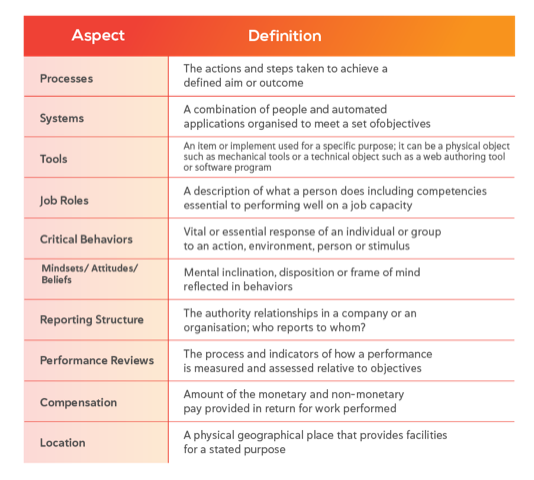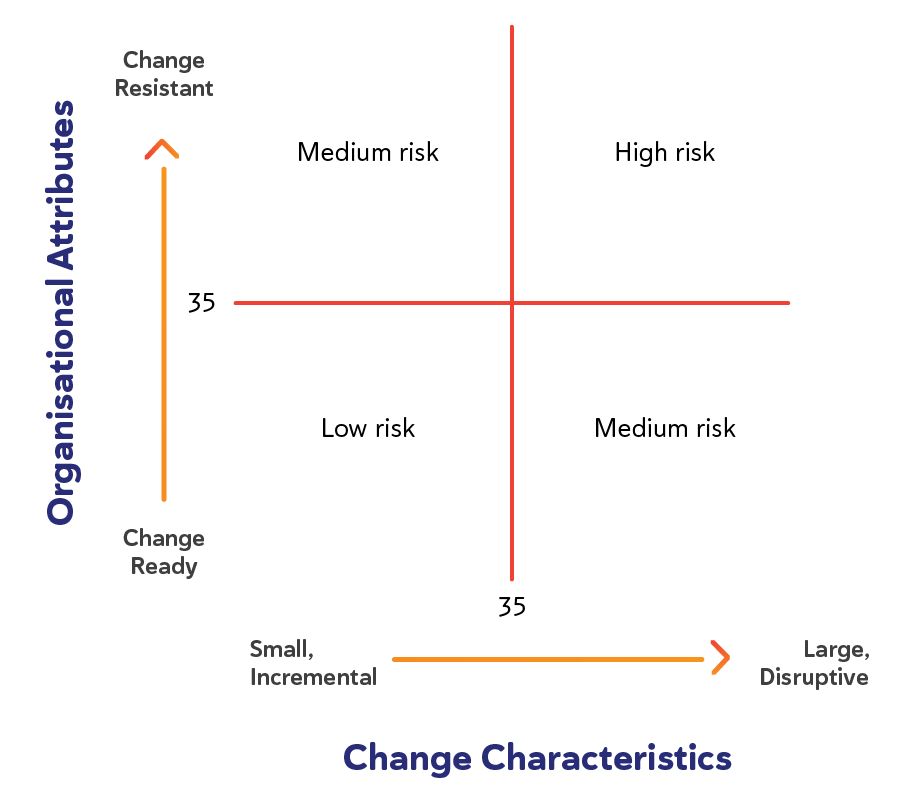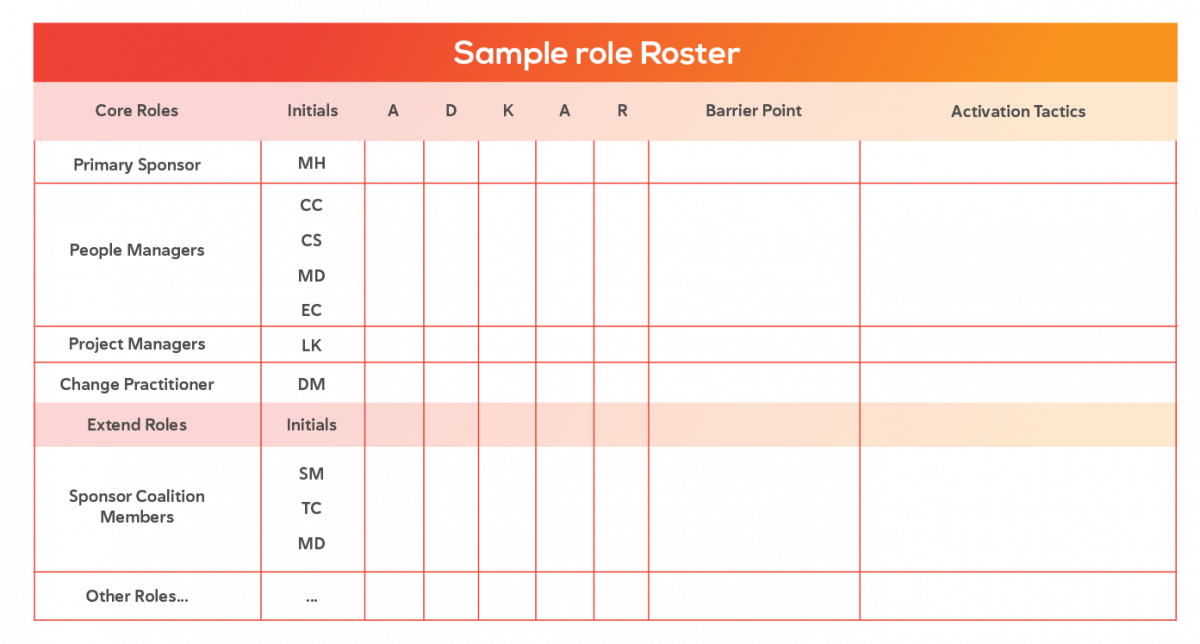How Prosci’s refreshed methodology improves the preparation of the change.
31 March 2022
Refresh your Change Management tool kit series (3/6).
Article written by Renaud de Lombaert
31 March 2022
Refresh your Change Management tool kit series (3/6).
Article written by Renaud de Lombaert
Welcome back to our series dedicated to updating (or building!) your Change Management toolkit. In this new instalment, we guide you step by step through the process of preparing for the change (*Phase 1 – “Prepare the approach”, updated PROSCI 3-phase Process*).
Driving successful change requires quite a lot of work upfront. Yet, too many organisations are trying to figure out the right mix of actions and tools on the go. With PROSCI's updated methodology, we've got your back covered. This is your cheat sheet to get into the starting blocks in the best possible conditions.
Define the vision. Define the impact. Define the approach. Lay solid foundations for the change and win the long-distance race.
Define and refine your vision. A clear-cut vision gives your organisation a clear future. What are you trying to accomplish?
To be more specific, what change are we talking about? And what does success look like? To dig deeper, use the 4P model.
Double down on your efforts to answer these questions thoroughly. When people don't understand what's happening, they simply have no reason to engage with the change. The 4P model will help you communicate more powerfully to generate buy-in (Awareness and Desire) and commitment down the line.
Now, let's push things a bit further. Once you have laid down your vision on paper, it's time to define the impact of the change. Who needs to work differently and how? In other words, which groups would most likely be impacted, in what ways and to what extent?
Change is multifaceted by design and does not translate equally at the group/individual level. PROSCI's ten aspects of change impact[1] analysis "brings the change into focus". It prompts you to break it down into (1) Processes, (2) Systems, (3) Tools, (4) Job Roles, (5) Critical Behaviours, (6) Mindsets, (7) Reporting Structure, (8) Performance Reviews, (9) Compensation, (10) Location … and repeat the analysis for each group.

One dimension may fully interfere with group A working routines, while its impact will only be marginal for group B. Getting a better grasp of each group's specificities is crucial to move everyone in the right direction at the same time. This case study gives you an example of what an impact analysis looks like and, most importantly, why taking a structured approach is key to delivering expected results on time.
Using your freshly minted data, you will find it easier to create adoption and usage metrics. The accuracy and relevance of key performance metrics depend on how well you defined the nature of the change (vision and impact). Each dimension helps you pinpoint what to measure to track progress and make sure that change happens. Remember that success depends on each person embracing the change and being proficient with the solution. Are people performing the way you expected them to? If so, how many (rate) and how fast (speed)? What are the behaviours that indicate that people effectively pivoted away from old habits? Are you receiving very few or, conversely, a lot of support requests or complaints (proficiency)? You will only find out whether your project is on the right track if you know what to look into from the get-go.
By mapping out the change, you got a bird's eye view of the challenges that lie ahead. Now, define the approach. What do you need to succeed? This third and final step involves analysing the risks associated with the change, identifying possible resistances, setting up CM resources, defining CM roles and aligning the roadmap with the project timeline.
That's probably a lot to take in, so let's start with an overview of the risk assessment (quadrant). Every organisation has specific characteristics (organisational attributes – *updated and extended Risk Assessment*) that make it more or less prone to change (resistance vs. openness to change). Think of the perceived need for change among employees, past history of change, shared vision, leadership style, organisation's culture and responsiveness, change competency across organisational levels, etc… At the same time, the intended change can involve small incremental leaps towards the future state or, conversely, be highly disruptive. Where and how the organisational change-readiness score and nature of the change intersect indicates the level of risk - low, medium or high – your organisation will probably be facing. High risks typically arise in organisations averse to change and faced with intensely disruptive alterations.

It is essential that you understand the specificities of your organisation (constraining social determinants) to better prepare for the change. They correlate to the amount of negative or lukewarm responses that the change will inevitably trigger. Don't be caught off guard. Resistance is a natural reaction to change. Managing stiff resistances or apathy early on is thus a big part of doing Change Management (proactive resistance management), as is the capacity to mitigate them throughout the lifecycle of the project (reactive resistance management). Either way, you need data and a thorough preliminary analysis of potentially conflicting areas to identify (and anticipate) resistances.
Next, you need to decide how to allocate CM resources and articulate them. There is no one-size-fits-all solution. You might want to create a CM team that is either external to the Project Management team (1) or sits with it (2); one with one foot in and one out (3), or one that is completely fused with PM from the top (CM manager and PM manager are the same) (4). Consult our guide to learn more about the benefits and constraints of the four mainstream structures.
You are now almost done with preparing for the change. But before you dive in, you still have to identify CM roles (*new role roster*). Proper activation of sponsors, middle managers, project managers and front-line employees takes adequate support. Ensure all key actors are on board and sufficiently equipped to fulfill their mission. For instance, middle managers might need specific training or coaching (Knowledge) or more time on their hands (Ability) to carry out CM related missions effectively. Use the ADKAR (Awareness, Desire, Knowledge, Ability, Reinforcement) model for individual change to identify and remove possible roadblocks.

With all key players in and ready to go, you can confidently move forward into the next phase (2), "Managing the Change". Don't miss our next post to keep refreshing your CM toolbox and build the CM capacity your organisation need to thrive in a fast-paced world!